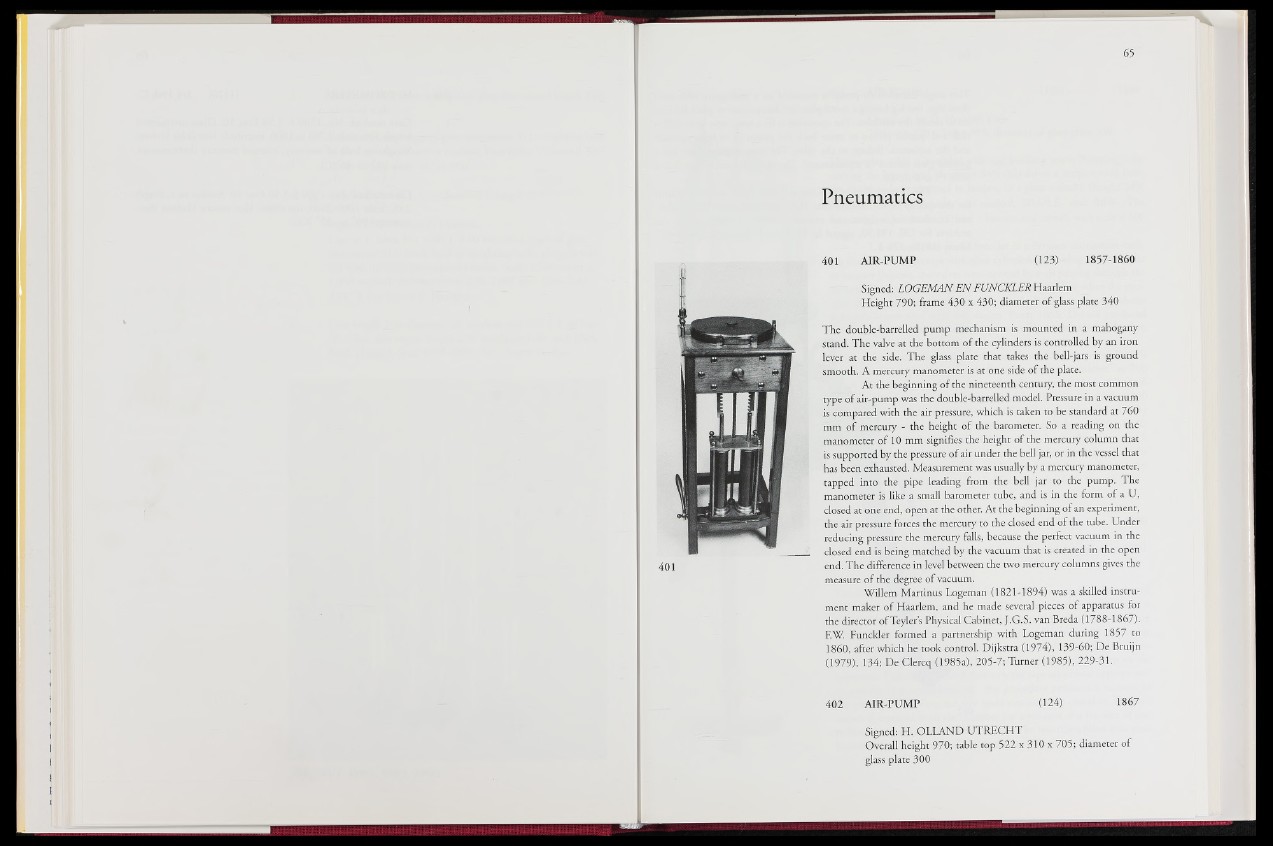
Pneumatics
401 AIR-PUMP (123) 1857-1860
Signed: LOGEMAN E N FUNCKLER Haarlem
Height 790; frame 430 x 430; diameter of glass plate 340
The double-barrelled pump mechanism is mounted in a mahogany
stand. The valve at the bottom of the cylinders is controlled by an iron
lever at the side. The glass plate that takes the bell-jars is ground
smooth. A mercury manometer is at one side of the plate.
At the beginning of the nineteenth century, the most common
type of air-pump was the double-barrelled model. Pressure in a vacuum
is compared with the air pressure, which is taken to be standard at 760
min of mercury - the height of the barometer. So a reading on the
manometer of 10 mm signifies the height of the mercury column that
is supported by the pressure of air under i he'bell jar, or in the vessel that
has been exhausted. Measurement was usually by a mercury manometer,
tapped, into the pipe leading from the bell jar to the pump. The
manometer is like a small barometer tube, and is in the form of a U,
closed at one end, open at the other. At the beginning of an experiment,
the air pressure forces: the mercury to the closed end of the tube. Under
reducing pressure thè mercury falls, because the perfect vacuum in the
closed end is being matched by the vacuum that is created in the open
end. The difference, in level between the two mercury columns gives the
measure of the degree of vacuum.
Willem Martinus Logeman (1821-1894) was a skilled instrument
maker oJffiaarlem, and he made several pieces of apparatus for
the director ofTeyler’s Physical Cabinet, J.G.S. van Breda (1788-1867).
F.W. Funckler formed a partnership with Logeman during 1857 to
1860, after which he look control. Dijkstra (1974), 139-60; De Bruijn
(1979), 134; De Clercq (1985a), 205-7;Turnet (1985), 229-3!te#M
402 AIR-PUMP .'< d e » c 1867
Signed: H. OI .1 ,A \D UTRECHT
Overall height 970; table top 522 x 310 x 705; diameter of
glass plate 300